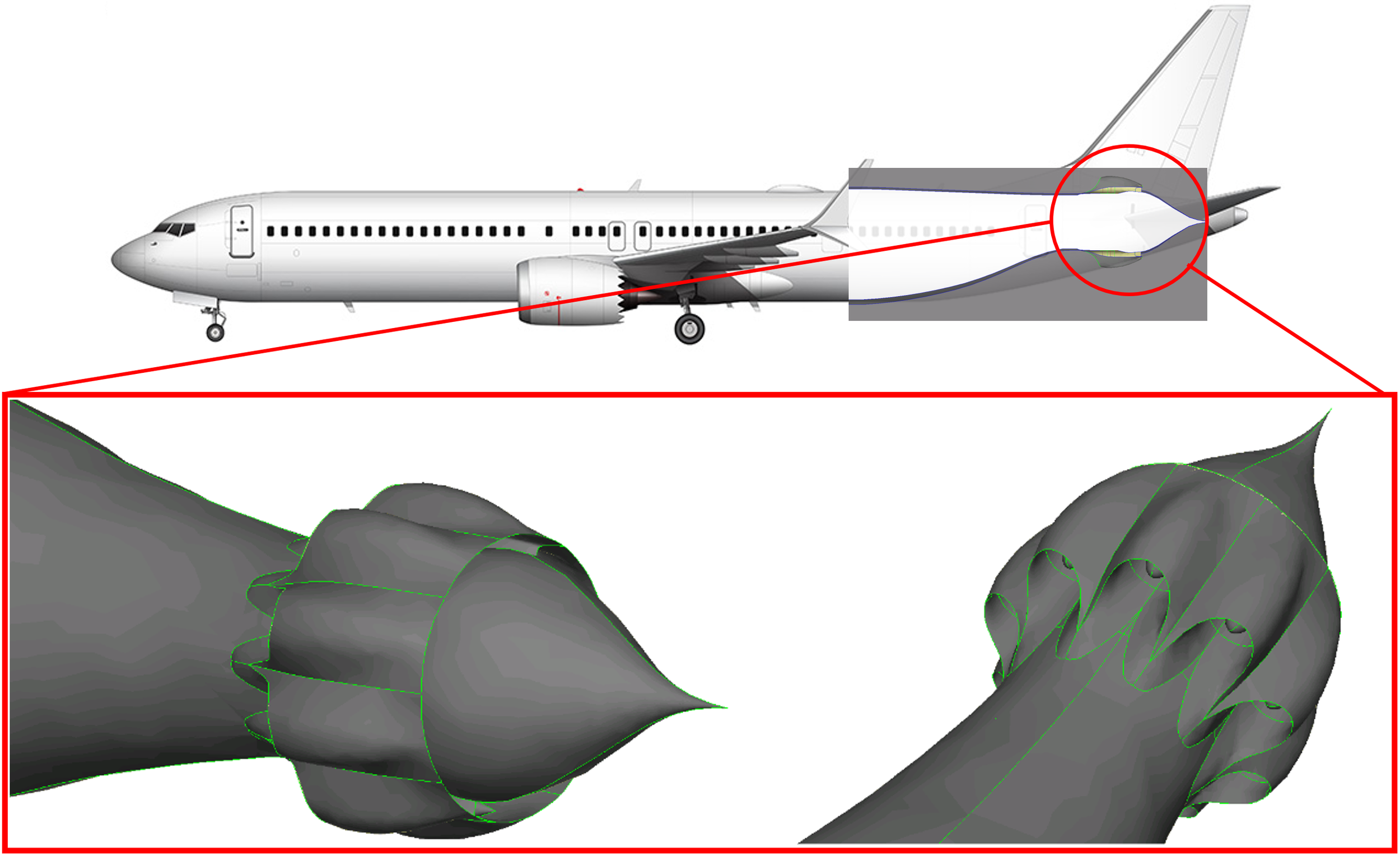Tail-Integrated Boundary Layer Ingesting Propulsion Systems for Turbo-Electric Aircraft
Zhibo Chen, Dr. Marshall Galbraith
Advisors: Professor Spakovszky, Professor Greitzer, Dr. Sabnis
Boundary layer ingestion (BLI) has the potential to improve aircraft performance and thus reduce fuel burn and environmental impact. For an aircraft with BLI, some portion of the airframe boundary layer enters the propulsor where it is energized, thus reducing jet and wake dissipation and improving aircraft propulsive efficiency. The required shaft power to achieve the necessary propulsive power can be therefore less than for non-BLI designs. This project is focused on airframe-propulsion system integration and aimed at assessing the optimum number and arrangement of fans to yield the most integration benefit while mitigating the distortion challenge. More specifically tail-BLI aircraft configurations are considered for turbo-electric aircraft. The potential performance improvements due to BLI and electrification are explored using the Transport Aircraft System Optimization (TASOPT) methodology.
To achieve our research targets, we have divided our project into three stages: fan design exploration, aircraft integration, and integration design exploration. In the first stage, we explore the motor-fan design space to study the influence of BLI profiles on fan performances. We are using a parametric motor-fan configuration, which enables us to investigate the effects of hub-to-tip radius ratio, the comparison between direct-drive and rim-drive, and installation effects. The body-force optimization framework is implemented to minimize shaft power at specific propulsive power with BLI. In the second stage, we will validate the body-force model on a known aircraft configuration. The goal is to assess and quantify the installed performance of the candidate aircraft, tail, and propulsor architecture. In the third stage, the design iteration framework will be carried out to optimize other architecture and propulsor installations, such as inlet shape, propulsor placement, propulsor count, etc. All our investigations will be kept generic so that we can extract the general performance trends of BLI and electrification.
Installation of BLI tail with BLI propulsors on a single-aisle mid-range civil aircraft.

